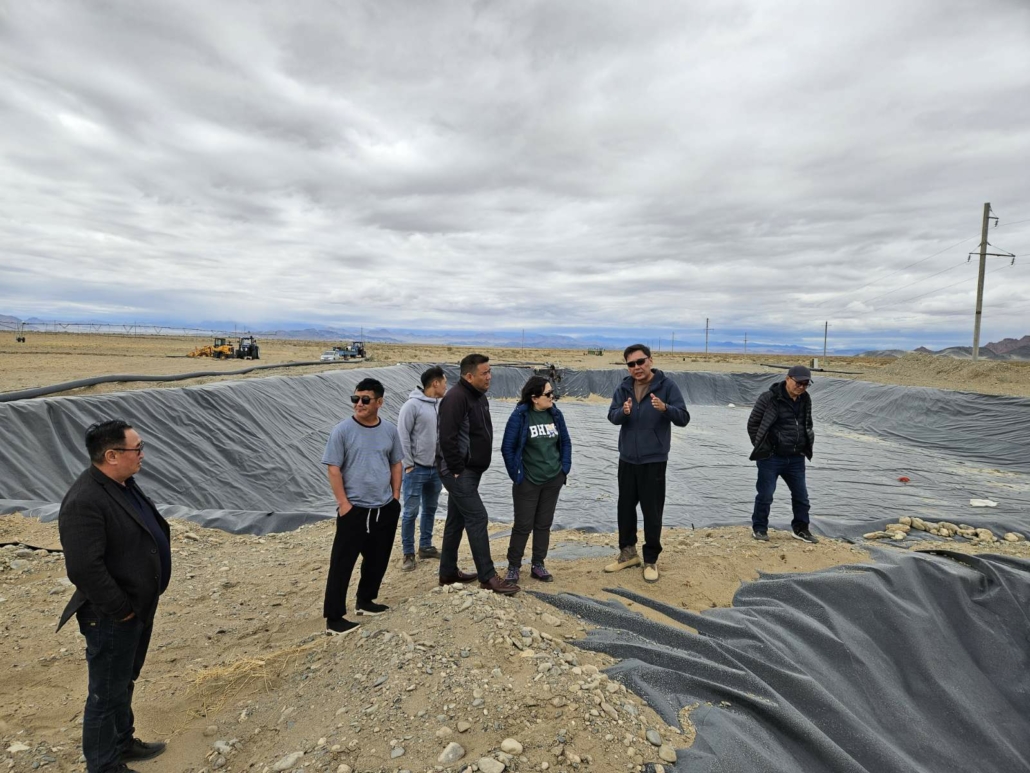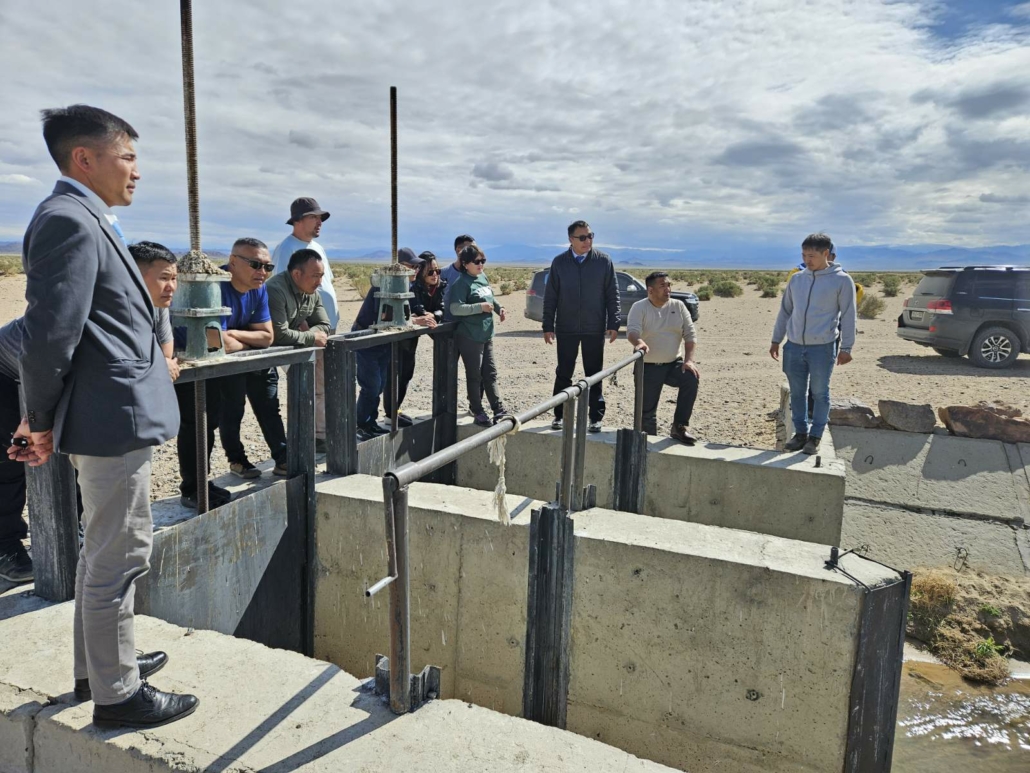Assessment of Irrigation System Conditions Conducted
Ms. Oyunsuvd.N agronomist of the Project Implementation Unit for the “Aimags and Soums Green Regional Development Investment Program,” carried out fieldwork in 16 soums across Bayan-Ulgii, Uvs, and Khovd aimags.
During the mission, she provided stakeholders with detailed information on the project’s objectives, expected outcomes, eligibility criteria, selection indicators, and implementation requirements in line with Mongolia’s long-term development policy, as well as relevant national laws including the Law on Crop Production, the Law on Plant Protection, the Law on Seed and Varieties, the Law on Water, and accompanying regulations.
In these three aimags, it was emphasized that irrigation system structures—such as headworks and main canals—must be registered as local government property, with clear land and water use rights. The establishment of local water users’ associations and active support from local governments were also strongly recommended to ensure compliance with current laws and decisions. Technical cooperation through cooperative-based shared service centers was presented as an effective model for sustainable operation.



Irrigation and Crop Production Conditions in Bayan-Ulgii Aimags:
- Altai Soum – “Toshin” area (300 ha), Buyant Soum – “Mandakh’s Am” (330 ha), and Deluun Soum – “Degee Khar” (240 ha): Irrigation area expansion is possible upon rehabilitation.
- Altai Soum – “Sharguu”: Currently used for haymaking; moderate condition; proposed reservoir construction; canal reconstructed from the state budget, but water flow is insufficient.
- Deluun Soum – “Degee Khar”: Main canal and headworks are local property; rehabilitation and recommendation to adopt sprinkler or drip irrigation through feasibility study and design consulting.
- Buyant Soum – “Mandakh’s Am”: Headworks and main canal transferred to “Murap” LLC in 2006. Renovated with 40 million MNT from the state and 240 million MNT from the company in 2011, but has been unused since 2013.
Irrigation and Crop Production Conditions in Uvs Aimags:
- Umnugovi Soum – “Khar Khag”: Water sources are the Namir and Orlogo rivers. Infrastructure registered as local property. Renovation will benefit herders and farmers.
- Tarialan Soum: Potential to collect spring meltwater from Kharkhiraa and Turgen rivers to build reservoirs and distribute water to hayfields (e.g., Arsai), agricultural land (e.g., “Altandуулga” LLC), and develop new reservoir at “Altan Khungarag” lowland.
- Sagil Soum – “Khukh Khargai”: 585 ha irrigated with sprinklers and surface water. Owned by “Arvijikh Uvs” LLC. Shared use with local herders; water shortages during droughts.
- Davst Soum – Torkhilog bag: 860 ha irrigated area for hay and fodder. Headworks and canals are local property.
- Naranbulag Soum – “Teeliin Boom”: 1561 ha surface-irrigated land. Headworks require rehabilitation.
-
Khyargas Soum: Reservoir proposal submitted to relevant authorities.
- Turgen Soum: 447 individuals collectively own 1438 ha (1362 ha hayfields). Proposal submitted to establish a reservoir and develop irrigation system for the Turgen river.
Irrigation and Crop Production Conditions in Khovd Aimags:
- Khovd Soum: Drinking water is drawn from 110–130 m depth; high mineral content. Proposal submitted to pump water from the Khovd River using solar power to improve greenery and reduce desertification.
- Darvi Soum: Irrigation system rehabilitation funded by the state budget is underway.
- Bulgan Soum: Proposal to rehabilitate headworks and canal built for diverting Bayangol river water. Also requested construction of a reservoir.
- Buyant Soum – “Khovd Agro Park”: 1900 ha of irrigated land not yet cultivated.
- Erdeneburen Soum: Poor condition due to lack of maintenance and farming equipment.
Common Challenges Identified in the Three Aimags:
- Widespread deterioration of irrigation systems: headworks and canals require renovation, alongside modernization of farming equipment (tillage, harvest, packaging, etc.).
- Improved supply of complete haymaking machinery.
- Use of adapted and promising fodder seed varieties; develop and introduce mixed fodder production technologies; establish a “Contracted Feed” model among cooperatives for risk mitigation during calving and climate shocks.
- Adoption of appropriate irrigation technologies such as reservoirs, drip, and surface irrigation for feed and hay production.
- Develop and implement a local regulatory framework for establishing water user associations, ensuring inclusive stakeholder participation.
- Develop and promote technologies suitable for mountain regions for irrigated hay and feed crop production; organize training for each farming stage.
- Provide market-based training for herders and farmers to calculate production costs and plan market-oriented sales.
- In mountainous windy areas, promote the creation of shelterbelt forests through citizen participation, and support seedling supply programs.
- Review and improve procedures for issuing land-use certificates and contracts for newly allocated hay and crop lands.
- Encourage and support greenhouse vegetable production, irrigated hay fields, wells, and fencing projects in soum centers through training and inclusion in the project.
- Support initiatives to construct reservoirs in target soums with available water sources, along with canal and main infrastructure development.
It was highlighted that many of these pressing issues can be addressed within the framework of the project.



